Written and Photographed By Jinjiang Yu
I used four years and traveled a hundred thousand kilometers to visit different museums and special old pastry shops which allowed me to collect over 7,000 traditional Chinese pastry molds which were made from Tang Dynasty to nowadays. The pastry is not only to fill one’s belly, but it also has a close connection to honor the God and ancestors, seasons, etiquette, etc. Molds are not valuable things, but they have insights and beauties. I think common stuff have their values because they come from daily life, the culture they contained are more fresh and warm because of it. This gives the possibility to resurrect and pass on them.

Visit history: The different universe inside the molds.
Many years ago, a friend brought me a gift which was a box of traditional wagashi from Japan. I loved it because it had a delicate outlook and significant meanings. I learned that Japanese wagashi was originated from a pastry at the Chinese Tang Dynasty. This inspired my interest in exploring the culture of traditional Chinese pasty. Searching for molds of pastry became a steady aim when I traveled around China.
As a designer, I pay extra attention to the style and pattern of the pastry mold. The unique regional custom and deep relationship with history allowed me to find a surprisingly colorful world. Less and less person know about this world now. I hope my visits can encourage more people to pay attention to this part of traditional Chinese culture which was related to our daily life.
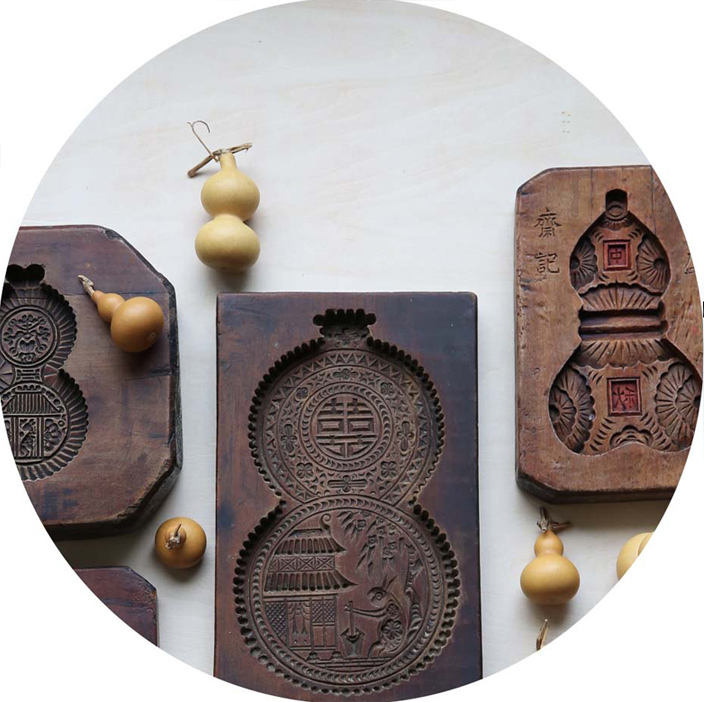
The economy of southern Shanxi has been prosperous since the ancient time, and it has a long history. Here is my favorite Treasure Land. I found my favorite mooncake mold which was named The Goddess and Cassia Tree in The moon here. This is an ancient artifact which was made during the Qing Dynasty. It was made of hardwood and delicately carved. It shows the local environment. The Moon Palace which was carved on the mold has similarities with the compound of southern Shanxi. They both used diamond shape floors which means good business and healthy family in the local. This mold was an heirloom of a family, and elders would use it to make mooncake in the early years. But when the kids grew up, they stopped. One elder who looked sad said,“young people love the new stuff now, and the mooncake that is made by us, are out of date.”
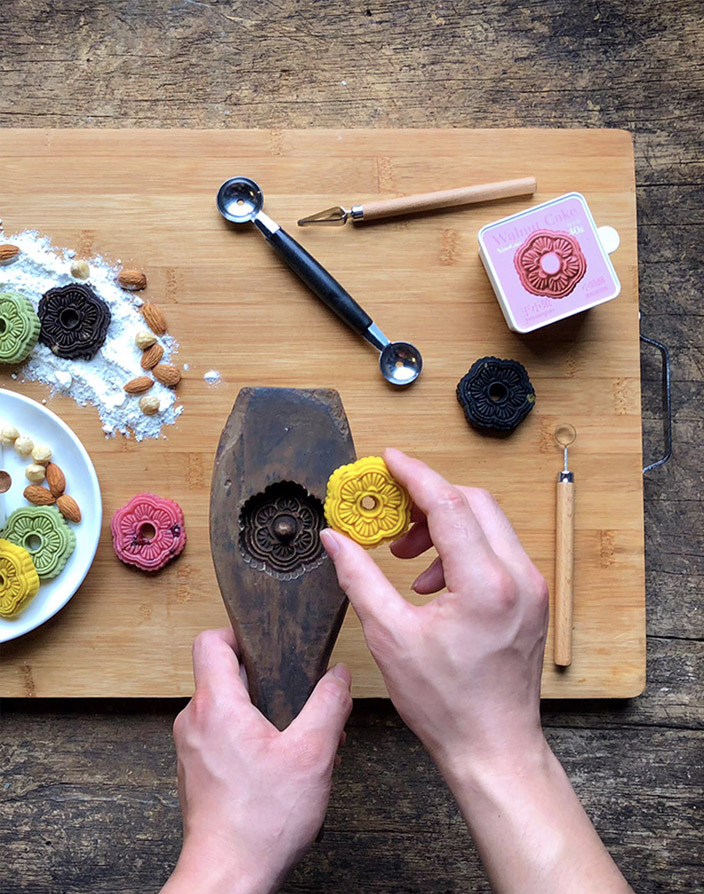
I also have a mold to make the matching flower-shape pastry. In the ancient time, the Chinese would eat pastry while drinking tea, so the pastry was also called Tea Pastry or Tea Food. People only had two meals per day, so the would drink tea and eat some refreshments in the afternoon. You can see it as the prototype of afternoon tea. At the end of Qing Dynasty, the government would hold a tea party and serve Chinese pastries which had rich meanings to treat the ambassador who came from different countries due to the influence of the British afternoon tea culture. The matching walnut pastry was one of the representatives. I found this mold of matching flower-shape pasty at Panjiayuan which is the place that only sells ancient stuff. The single hole mold was made at the Qing Dynasty, and the material is also hardwood. The shape is a Chinese flowering crabapple with six petals. The carving is delicate, and the carver must have been experienced. The shop owner said that the mold was found at the waste of a compound when an old Hutong was removed. The mold was a property of a wealthy nobility of the Qing Dynasty. The pastry made with it would be given to family and friends as a gift.

One time at Xian, I found a rare ceramic mooncake which was made at Tang Dynasty in a small shop at the antique market. The owner said that this was discovered at an ancient tomb. The outside of the mooncake is surrounded with Western Region lined bead pattern which was popular at Tang Dynasty. The inside was painted with interlocking branches which was exotic and fancy and it was very different from the normal people’s pastry. Interlocking Branches was a popular pattern in the Tang Dynasty. There is a line in the Everlasting Regret which is a poem wrote by Juyi Bai: we’d be two lovebirds flying together on the sky, we’d be two trees with interlocking branches on earth. The word mooncake came from Tang Xuanzong and Yang Guifei according to legend. Once they were eating Hu cake while watching the moon together at the Mid-Autumn Festival, Tang Xuanzong felt the Hu cake’s name was not pretty, so Yang Guifei said,“the cake looks like the moon in the sky, how about mooncake?” One ceramic moon cake witnessed a rare part of history.
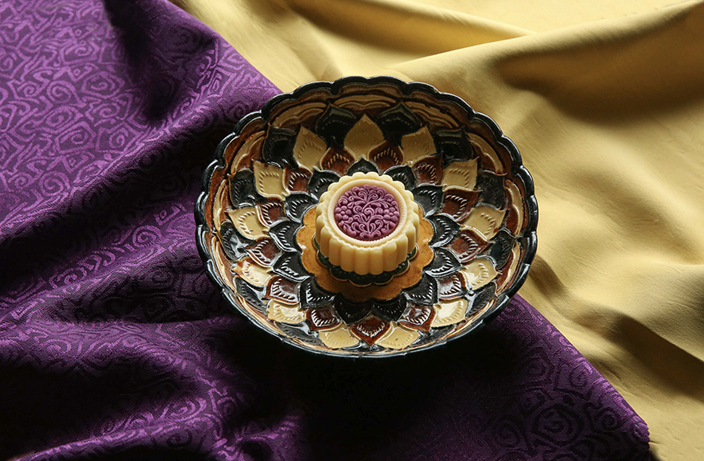
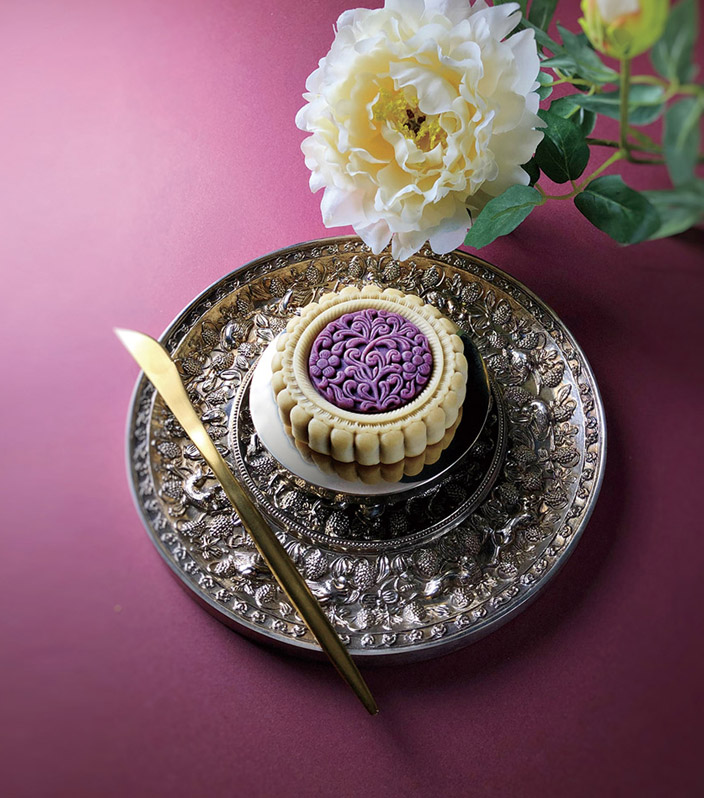
Future: based on tradition.
I had visited Mr. Baode Sun in Beijing who is the descendant of Sun’s Tradition Pastry Moulds. He is the second generation of Sun’s Tradition Pastry Mould, and his family used to carve aulic pastry molds for Empress Dowager Cixi.
Except for the beautiful patterns and beautiful meaning, making molds requires a certain level of technique. In the ancient times, pastries were made by hand. They used molds to standardize the weight and mass of the pastries precisely to make sure that one wouldn’t be stuffed after they had eaten a delicacy and enough to share. We can say that making molds is an ancient industrial design.
Mr. Baode Sun once said that there are more and more new ingredients and techniques, and there are lesser people want to learn from him. During my visit, I had heard many same exclamations. As a designer, I am paying attention to how to apply Chinese culture and traditional arts in modern society. So I designed and launched Yuxiaoguo snack series. I hope it can be a new attempt at a new conventional Chinese pastry.
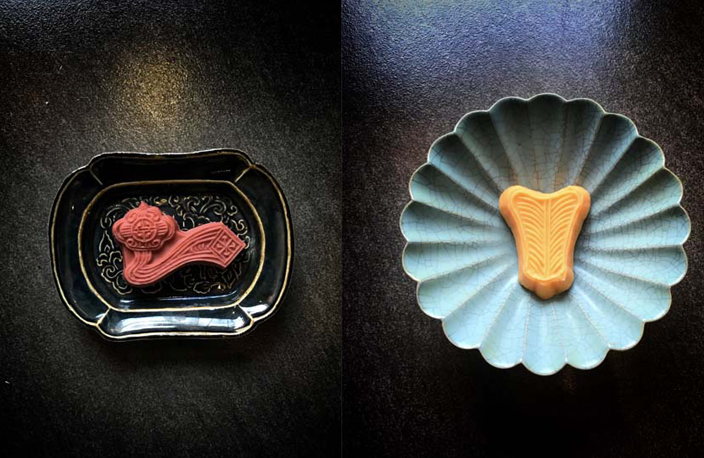

I hope the top traditional Chinese pastry in the future has the culture in it. Such as nice meaning and the expression of the emotion of reciprocity. Just like the western pastry which is in trend, baking a traditional Chinese pastry for your friend can be a fashion as well. In the process of inheriting traditional handcraft, we also choose ingredients according to the eating habits of the modern people and improve the recipe which was too greasy and sweet.
On the other hand, I have collected more than 7,000 different traditional Chinese pastry molds from all over China. I have studied and organized the culture of traditional Chinese pastry systematically. I hope to increase my collection and open a museum of traditional Chinese pastry molds one day. I wish more and more people can understand this fantastic part of Chinese food.
I have researched traditional pastries in other countries and regions, and the most impressive one is still the Japanese wagashi. I think it is because of the artisan spirit which has been passed on in the area. No matter how the technique develops, they never break away from traditional culture. The development of traditional Chinese pastry can be prosperous, and its root is in Chinese culture.
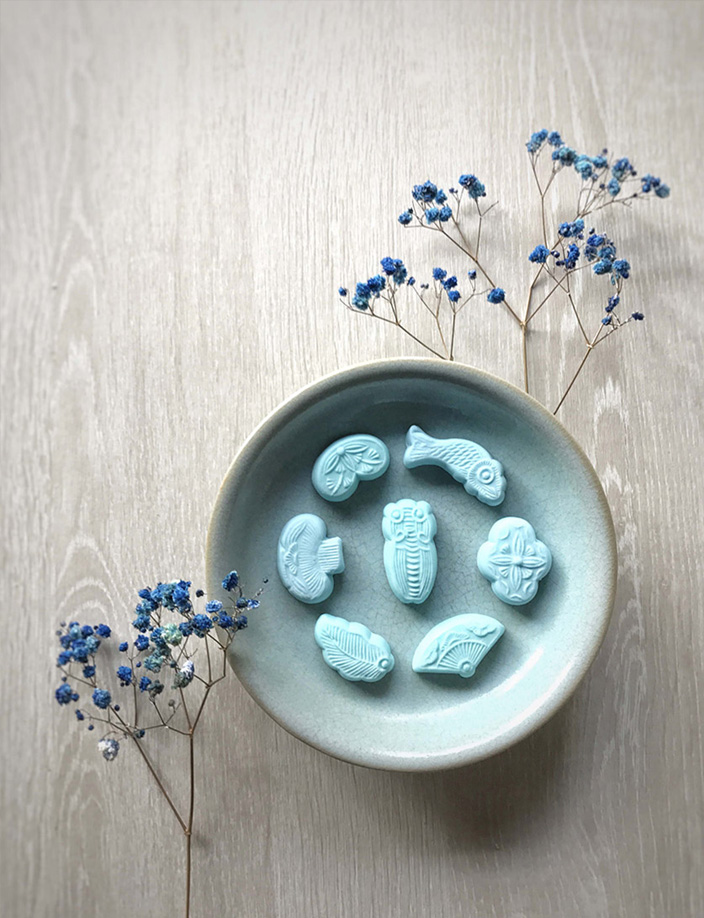

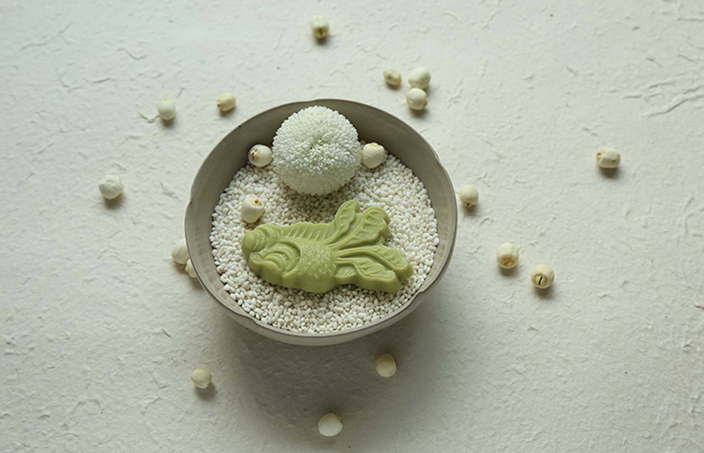
What is the difference between you and the artisans who bake traditional pastry?
I think the most significant difference is the horizon. I have been to many countries, I know about tradition and international trend. Most of the traditional artisans focus on one single area’s pastry. In the meantime, my pastry considered more about the need of modern people. Such as the design of our Mini Container. It solves the problem that scraps drop when you eat pasties. And as same as the traditional artisans' consideration of the mass of the molds, we calculated the capacity carefully so the container can hold a pastry that has enough nutrition and won’t make one worry about getting fat after eating.
What’s your suggestion for travelers who want to find out more about traditional pastry?
The history of traditional Chinese pastry molds is very long, and it is not hard to find. These ancient artifacts have less attention and fewer people to follow it as a trend or try to profit from it, comparing to those famous and expensive paintings, bronze wares and jade carvings. People can be more focused on the molds and the culture itself. If someone is interested, they can cut in from regions such as their hometown or places have the rich cultural environment. They will receive a lot if they can thoroughly combine with the local culture.
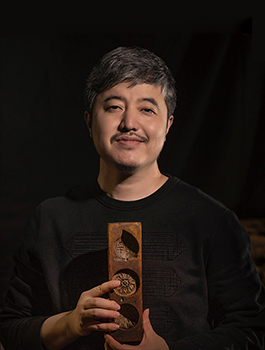
【Information of the traveler】
Jinjiang Yu
The founder of Yuxiaoye which is a pastry shop that sells new style Chinese pasty.
The co-founder of Xiaoguan Tea
A famous artist, collector, and designer.



